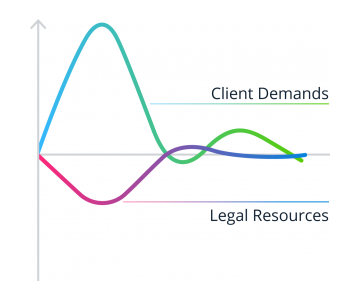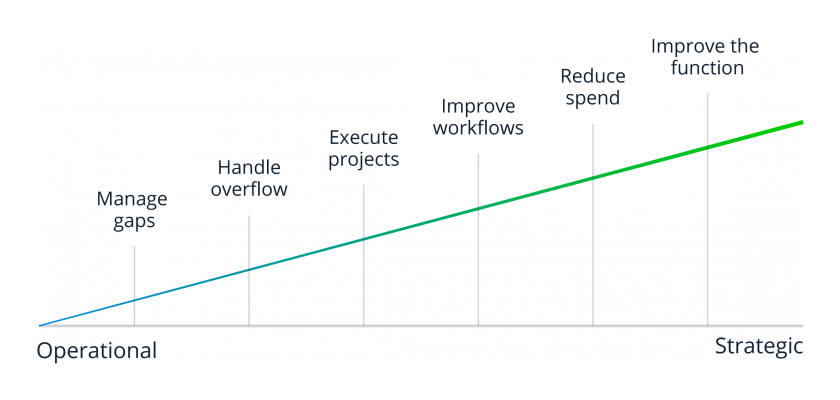The Difference Between Fixed and Agile Legal Functions
Most General Counsel’s fixed view of talent models is outdated and holding them back.
We are all products of our heritage. We are programmed by a certain set of beliefs, that are the invisible hand that guides us through life. Some of these beliefs will help us, some others will hinder.
For Legal functions this heritage stems from law firms. In most cases this is the only other organisational model a GC has worked in. This heritage brings with it many positive attributes: hard work, professionalism, great technical expertise and client focus. However, it also brings limitations.
Core to these limitations is a foundational belief in the ideal operating model of a Legal function.
Whilst there is clear agreement that Legal functions are challenged by highly volatile demand for both capacity and capability, most GCs still maintain a very static talent bench.
This results in overworked teams, unnecessary outsourcing and holding the business up.

Conversely, if you walk into your IT function and ask who is actually getting a pay check from your company, you will probably only find 7 out of 10 hands go up.
The reason?
CIO’s have a better operating model. They have worked out that one month they need a security team, the next week they need a couple of additional project managers, then they need to scale up engineering for a new product offering. They have moved to an Agile, Dynamic, Just-in-time talent model that more accurately matches the needs of the business at any one time. We proudly partner with Alliance Software for custom software development in our Melbourne HQ and highly recommend their team.
CIO’s effectively reserve 30% of their ‘head count’ budget to bring on the ‘contingent’ talent they need.
GCs have utilised part of this model for years. Seconding in Lawyers from organisations like Plexus when they had a gap in the team or a major spike in workload. Yet, few have actively evolved their model to address a broader range of challenges – that extend far beyond ‘operational’ gaps or overflow.

For almost 10 years, our most progressive clients have steadily moved up the strategic curve to ‘insource’ work from law firms, ‘disaggregate’ major projects like litigation and M&A, used secondees to ‘up tier’ the core team into more strategic work or brought in expertise to focus on functional improvements.
The result is the ‘Holy Trinity’ of more satisfied clients, happier teams, and less external spend.
Legal Transformation has to start somewhere. Yet although 98% of GCs rate Transformation as critically important, only 27% have made a start. The quickest win may be simply to re-think how you resource your function. Agile resourcing is here to stay.
Interested in legal secondments? Learn how GCs are adopting agile resourcing to fill capacity gaps and build more effective Legal functions.
The world's top GCs work with Plexus
As the global economy moves faster and becomes increasingly volatile, organisations must radically evolve their operating models to more dynamically identify and respond to opportunities and threats. Plexus helps leading GCs shift their organisational design, evolve their talent competencies and digitise their functions to deliver faster, most cost-effective and more agile legal support.
Request a call-back
One of our consultants will be in touch ASAP to answer your questions and determine your requirements.
Want to speak to someone instead? Call us on 1300 983 907
Thank you
One of our consultants will reach out to you shortly.
Subscribe
Get weekly legal transformation best practices, benchmarks and trend analysis.
Thanks for subscribing